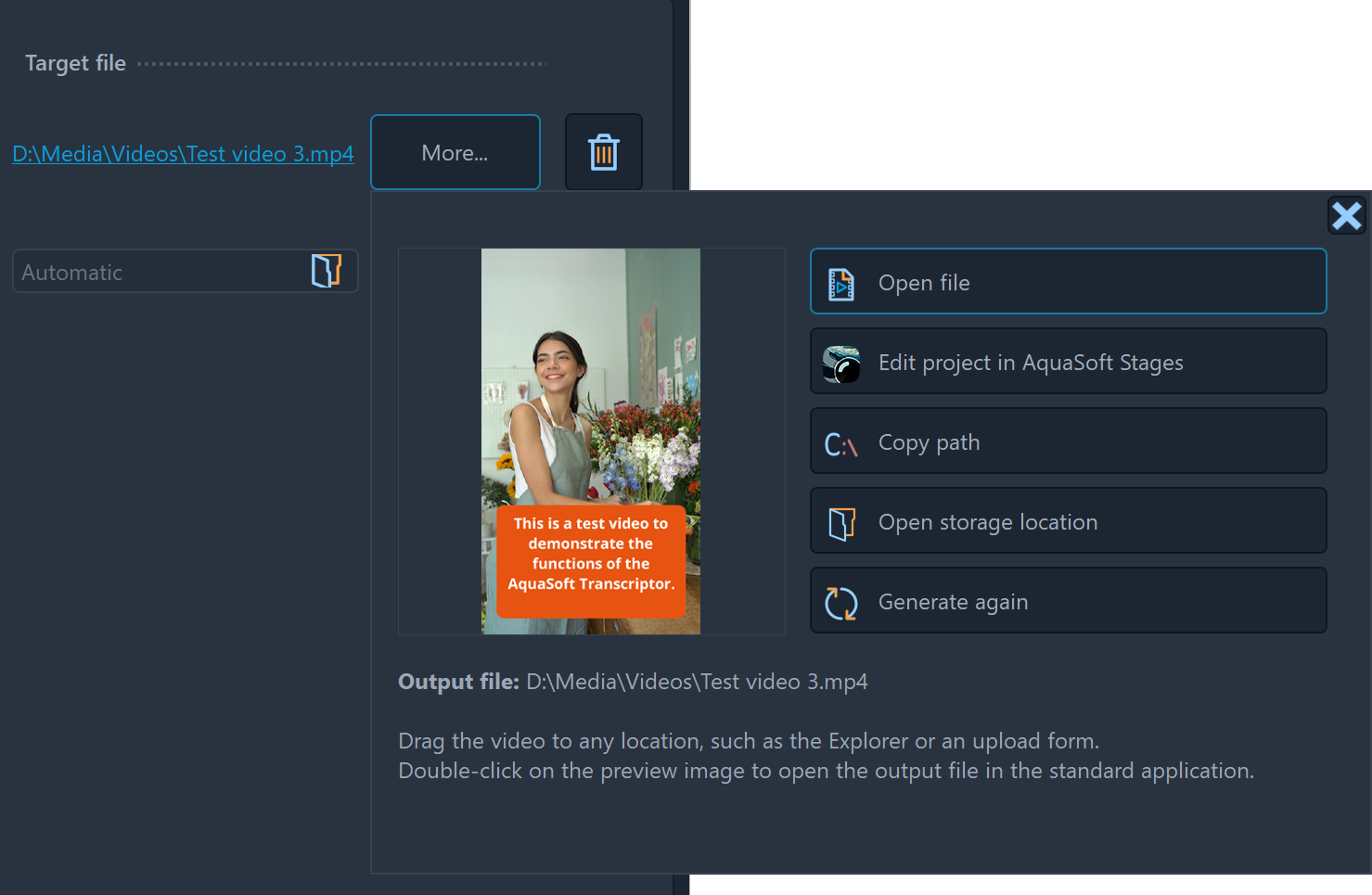|
<< Click to Display Table of Contents >> Target file and output |
  
|
|
<< Click to Display Table of Contents >> Target file and output |
  
|
You define your export settings in this program area. With AquaSoft Transcriptor or Transcriptor Pro you can export video files, subtitle files and text files.
Once all settings have been made, a file inserted and a transcription template and an output template selected, transcription can be started via the Toolbar. A progress bar on the job indicates that transcription has been started. When you start the AI-supported transcription for the first time, the necessary software is downloaded once (online connection required) and saved on your computer (approx. 400 MB). It is then permanently available in the program. In addition, the start buttons in the toolbar change and you can pause or cancel the creation of the target file. If several jobs have been started, they are calculated one after the other. If the transcription was completed successfully, the result is displayed.  Result (here 9:16 portrait format video) and options ResultClick on the link of the target file to check the result in the standard application for this file type. Click on the More ... button opens a dialog in which you can play the result via Open file or by double-clicking on the preview image. With Create again, the same video can be exported again with different settings. You can also copy the storage path to the clipboard or open the storage location in Windows File Explorer. With Generate again, the same video can be exported again with different settings. The second button offers the option to open the project in AquaSoft Stages. If Video Vision or Photo Vision are installed on the computer, the project can also be opened in these video editing programs (from version 2024). If none of these programs are installed, you can download the demo version of AquaSoft Stages 2024. More on this in the chapter Edit project file. |